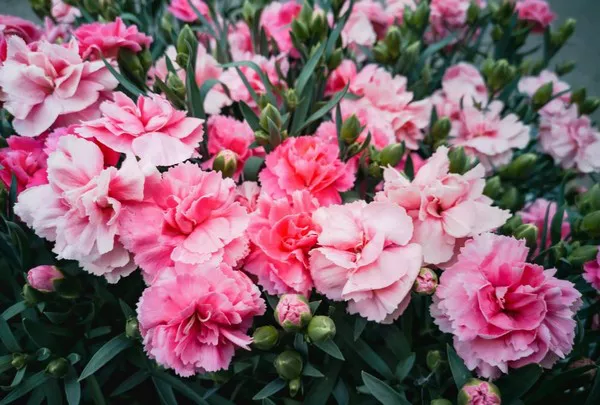Palm trees, with their iconic fronds and tropical charm, have captured the imagination of people worldwide. However, the beauty of palm trees extends beyond their leaves; their flowers also play a crucial role in their life cycle and ecological significance. In this article, we will delve into the fascinating world of palm tree flowers, and their appearance, characteristics.
Palm Trees: A Botanical Marvel
Before we explore palm tree flowers, let’s briefly examine the botany of palm trees. Palm trees belong to the family Arecaceae, characterized by their single-stemmed trunks, large compound leaves, and distinctive inflorescences. They are found across various ecosystems, from rainforests to deserts.
Palm Tree Flowers
Palm tree flowers are borne in clusters called inflorescences. Each inflorescence may contain hundreds or thousands of tiny flowers, varying in size, color, and arrangement based on the palm species.
1. Diverse Forms of Inflorescences
The inflorescence structure differs among palm species. The most common types are:
Spadix: A fleshy, elongated spike with small flowers tightly packed along its length. Seen in species like the coconut palm (Cocos nucifera).
Panicle: Branched and branched again, forming a pyramidal shape. Example: the date palm (Phoenix dactylifera).
Raceme: A simple, unbranched cluster of flowers along a central stalk. Seen in the oil palm (Elaeis guineensis).
2. Intricate Flower Anatomy
Palm tree flowers might appear simple at first glance, but they possess complex reproductive structures. Typical components include sepals, petals, stamens, and pistils. The size and shape of these parts vary significantly between species.
3. A Kaleidoscope of Colors
While many palm tree flowers are inconspicuous and greenish-yellow, others showcase vibrant hues. Colors range from creamy whites, soft yellows, and warm oranges to deep reds and purples. These pigments often attract pollinators.
4. Pollination Mechanisms
Palm tree flowers have evolved unique pollination mechanisms to ensure successful fertilization. Some rely on wind pollination, while others depend on specific animal pollinators, such as bats, bees, birds, or beetles.
5. Role of Palm Tree Flowers in Reproduction
The flowers’ primary purpose is to facilitate sexual reproduction in palm trees. Once pollination occurs, the flowers transform into fruits containing seeds that enable the tree’s propagation.
6. Palm Tree Flower Gardening
For horticultural enthusiasts, growing palm trees and witnessing their flowers can be a rewarding experience. Certain palm species are well-suited for cultivation in gardens and landscapes, adding a touch of tropical elegance to any environment.
7. Rare and Exotic Palm Tree Flowers
Some palm species are exceedingly rare and possess exotic flowers that are seldom seen by the general public. Discover these hidden treasures and the efforts made to conserve them.
Economic and Cultural Significance
Palm trees have been essential to human societies for centuries. Their flowers contribute to the production of various products, including dates, coconuts, palm oil, and rattan. Additionally, in cultures worldwide, palm tree flowers hold symbolic significance and are used in religious ceremonies and festivals.
Conclusion
The allure of palm tree flowers lies in their captivating beauty, ecological importance, and cultural significance. From the towering coconut palm to the elegant date palm, each species offers a unique display of floral splendor. As we appreciate and understand these botanical marvels, it becomes essential to protect and conserve them for future generations to enjoy and appreciate the beauty they bring to our world. Let us celebrate the enchanting journey of palm tree flowers, a symbol of nature’s resilience and eternal grace.


